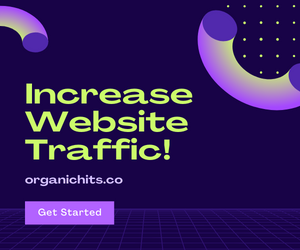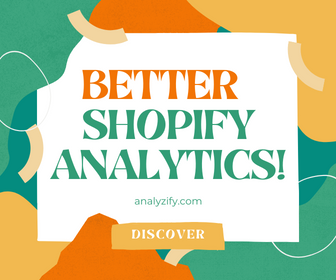#7f476c - Twilight Lavender Hex Color Code
#7F476C (Twilight Lavender) - RGB 127, 71, 108 Color Information
- #7F476C (Twilight Lavender) - RGB 127, 71, 108 Color Information
- #7f476c Conversion Table
- Percentages of Color #7F476C
- Color spaces of #7F476C Twilight Lavender - RGB(127, 71, 108)
- #7f476c Color Accessibility Scores (Twilight Lavender Contrast Checker)
- Twilight Lavender ↔ #7f476c Color Blindness Simulator
- #7F476C Color Combinations - Color Schemes with 7f476c
- Shades and Tints of #7f476c Color Variations
- Alternatives colours to Twilight Lavender (#7f476c)
- #7f476c Color Codes for CSS3/HTML5 and Icon Previews
Percentages of Color #7F476C
Color spaces of #7F476C Twilight Lavender - RGB(127, 71, 108)
| HSV (or HSB) | 320°, 44°, 50° |
| HSL | 320°, 28°, 39° |
| Web Safe | #663366 |
| XYZ | 13.712, 10.101, 15.414 |
| CIE-Lab | 38.023, 29.378, -11.092 |
| xyY | 0.350, 0.258, 10.101 |
| Decimal | 8341356 |
#7f476c Color Accessibility Scores (Twilight Lavender Contrast Checker)
On dark background [POOR]
On light background [GOOD]
As background color [GOOD]
Twilight Lavender ↔ #7f476c Color Blindness Simulator
#7F476C Color Combinations - Color Schemes with 7f476c
Shades and Tints of #7f476c Color Variations
#7f476c Shade Color Variations (When you combine pure black with this color, #7f476c, darker shades are produced.)
#7f476c Color Codes for CSS3/HTML5 and Icon Previews
#7F476C in Programming
| HTML5, CSS3 | #7f476c |
| Java | new Color(127, 71, 108); |
| .NET | Color.FromArgb(255, 127, 71, 108); |
| Swift | UIColor(red:127, green:71, blue:108, alpha:1.00000) |
| Objective-C | [UIColor colorWithRed:127 green:71 blue:108 alpha:1.00000]; |
| OpenGL | glColor3f(127f, 71f, 108f); |
| Python | Color('#7f476c') |
#7f476c - RGB(127, 71, 108) - Twilight Lavender Color FAQ
Hex color code for Twilight Lavender color is #7f476c. RGB color code for twilight lavender color is rgb(127, 71, 108).
The RGB value corresponding to the hexadecimal color code #7f476c is rgb(127, 71, 108). These values represent the intensities of the red, green, and blue components of the color, respectively. Here, '127' indicates the intensity of the red component, '71' represents the green component's intensity, and '108' denotes the blue component's intensity. Combined in these specific proportions, these three color components create the color represented by #7f476c.
The RGB percentage composition for the hexadecimal color code #7f476c is detailed as follows: 49.8% Red, 27.8% Green, and 42.4% Blue. This breakdown indicates the relative contribution of each primary color in the RGB color model to achieve this specific shade. The value 49.8% for Red signifies a dominant red component, contributing significantly to the overall color. The Green and Blue components are comparatively lower, with 27.8% and 42.4% respectively, playing a smaller role in the composition of this particular hue. Together, these percentages of Red, Green, and Blue mix to form the distinct color represented by #7f476c.
The RGB color 127, 71, 108 represents a dull and muted shade of Red. The websafe version of this color is hex 663366. This color might be commonly referred to as a shade similar to Twilight Lavender.
In the CMYK (Cyan, Magenta, Yellow, Black) color model, the color represented by the hexadecimal code #7f476c is composed of 0% Cyan, 44% Magenta, 15% Yellow, and 50% Black. In this CMYK breakdown, the Cyan component at 0% influences the coolness or green-blue aspects of the color, whereas the 44% of Magenta contributes to the red-purple qualities. The 15% of Yellow typically adds to the brightness and warmth, and the 50% of Black determines the depth and overall darkness of the shade. The resulting color can range from bright and vivid to deep and muted, depending on these CMYK values. The CMYK color model is crucial in color printing and graphic design, offering a practical way to mix these four ink colors to create a vast spectrum of hues.
In the HSL (Hue, Saturation, Lightness) color model, the color represented by the hexadecimal code #7f476c has an HSL value of 320° (degrees) for Hue, 28% for Saturation, and 39% for Lightness. In this HSL representation, the Hue at 320° indicates the basic color tone, which is a shade of red in this case. The Saturation value of 28% describes the intensity or purity of this color, with a higher percentage indicating a more vivid and pure color. The Lightness value of 39% determines the brightness of the color, where a higher percentage represents a lighter shade. Together, these HSL values combine to create the distinctive shade of red that is both moderately vivid and fairly bright, as indicated by the specific values for this color. The HSL color model is particularly useful in digital arts and web design, as it allows for easy adjustments of color tones, saturation, and brightness levels.
Twilight Lavender #7f476c Similar Colors
Color can be an underestimated and profound force in our daily lives, having the potential to alter mood, behavior, and cognitive functions in surprising ways. Students, in particular, rely on their learning environments for optimal academic performa...
Why Every Designer Should Consider an IQ Test: Unlocking Creative PotentialThe world of design is a vast and intricate space, brimming with creativity, innovation, and a perpetual desire for originality. Designers continually push their cognitive boundaries to conceive concepts that are not only visually enticing but also f...
Exploring the Benefits of VPN for Designers and CreativesWhen breaches of confidentiality and privacy became the norm on the Internet, all and sundry began to discuss VPNs. Today, we delve into the benefits of using VPN for designers. How can web designers leverage VPNs to enhance their productivity and sa...
Creating a Branded Educational Identity: A Guide to HTML Color Palette SelectionThe creation of a color palette for branding purposes in the field of education follows unique goals that usually go beyond classic marketing methods. The reason for that is the necessity to create a different kind of brand recognition where the use ...
The Ultimate Conversion Rate Optimization (CRO) ChecklistIf you’re running a business, then you know that increasing your conversion rate is essential to your success. After all, if people aren’t buying from you, then you’re not making any money! And while there are many things you can do...


